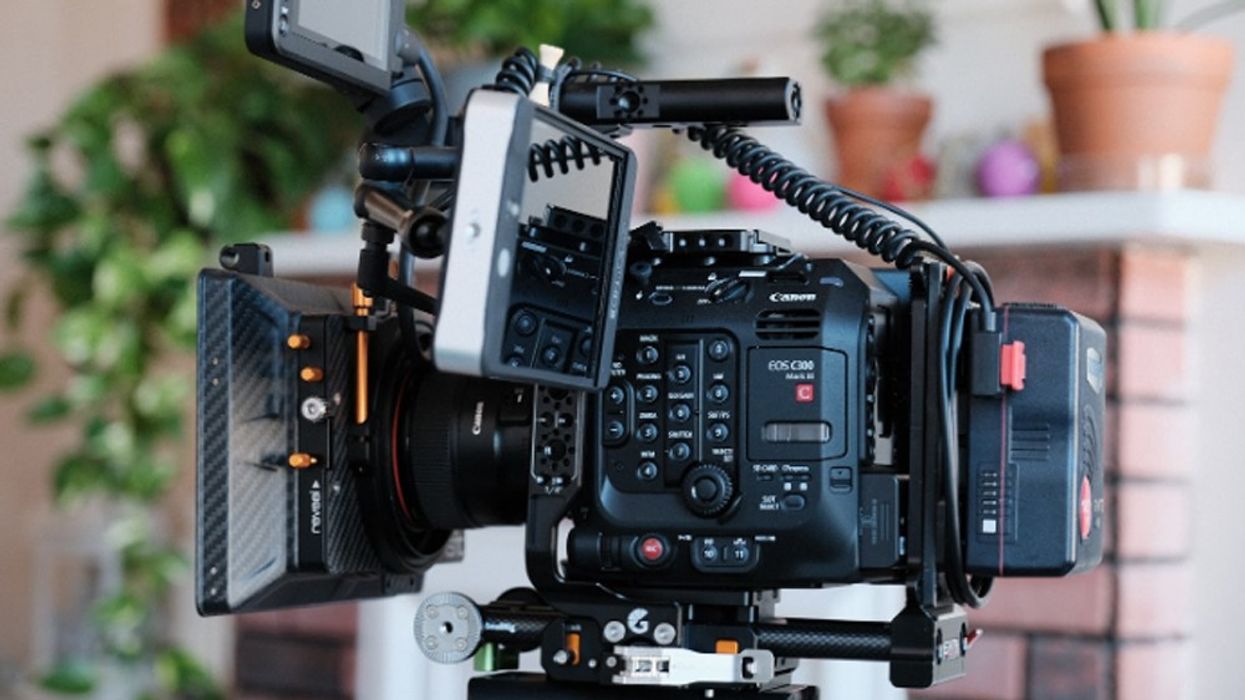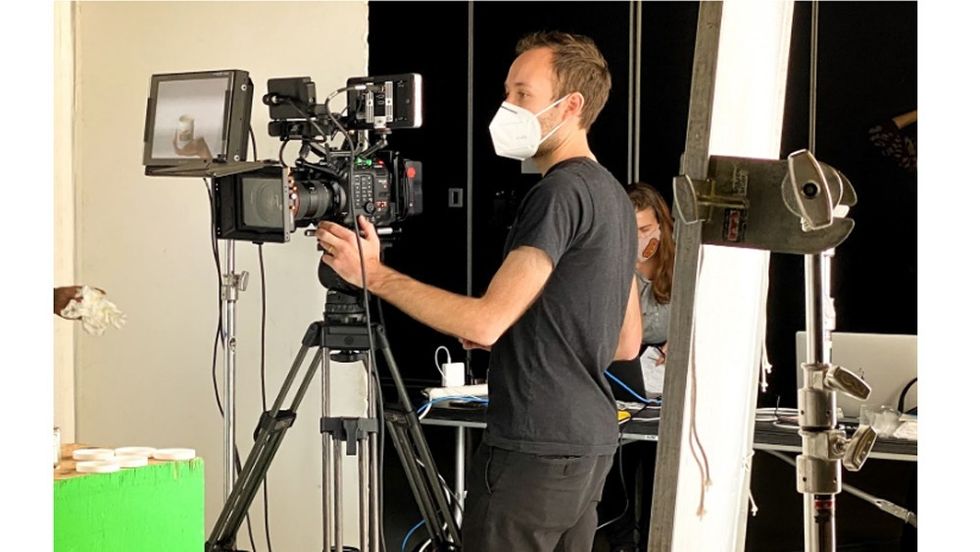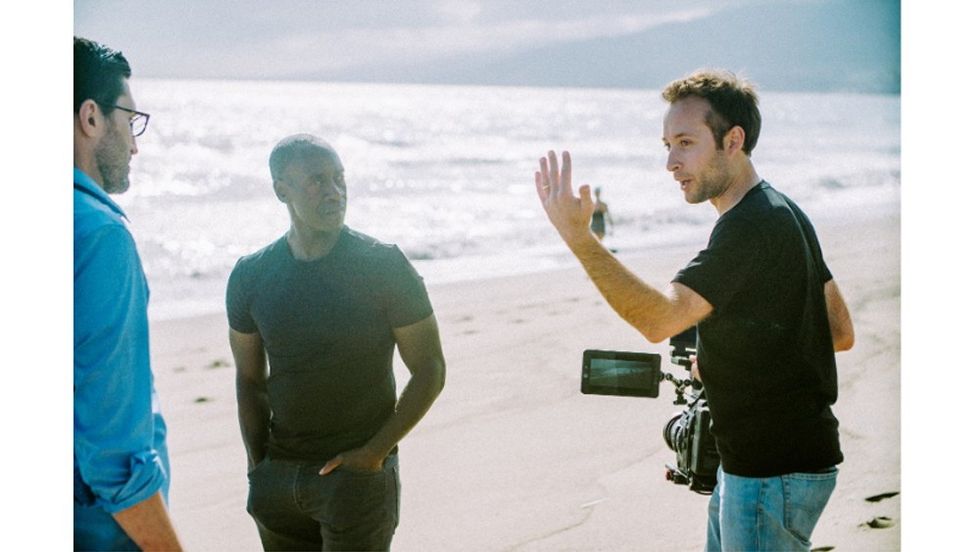Here's Why the Canon C300 Mark III Is My Go-To Cinema Camera
Let's dive into what makes the Canon C300 Mark III one of the best cinema cameras today.

As a Brooklyn-based filmmaker whose time is divided between directing/DPing commercial work, creating my own films, and fending off pandemic fatigue by hiking the Hudson Valley with the fervor of an early pioneer, I’ve been working professionally for the past 12 years and have been extremely lucky to travel the world directing and shooting commercials, mini-docs, and PSAs.
The Canon EOS Cinema cameras have been my tool of choice. I owned the C100, which we used on my first feature Trivia Night, and have been shooting on the C300 Mark II for the last few years. While I enjoyed the C300 Mark II, I had issues with it ergonomically, aesthetically, and with some technical limitations.
When the C300 Mark III came out this spring, it seemed to solve all the issues I had with the previous generation, so I took the plunge and upgraded a few weeks ago.
Here's my experience and why it's turned into my favorite camera for the kind of work I do (and also a few things that could be improved).
Pros
Image Quality, Sensor, and Color
The image has been transformed by the addition of a new sensor and color science. Canon added a new Dual Gain Output sensor, technology that has similarly been used by ARRI (and a few others) for years, which allows for higher dynamic range by providing two read-out paths for each pixel with different amplification.
This allows the camera to simultaneously “expose” for multiple saturation and noise values and combine them into one image. From what I’ve experienced, the C300 MK III adds about a little under a stop of dynamic range beyond the C300 MK II. The latitude of the footage has been improved as well.
Beyond this improvement, the colors finally reflect what I see with my eye. The biggest differences I’ve noticed so far are the accurate reproduction of skin tones, greens and reds in nature, and mixed color temperatures. The C300 MK II did a good job with skin tones, especially in full-spectrum daylight, but it often felt like it was missing the subtle variations and richness I saw with my eye. With the C300 MK III, the skin tones are beautifully reproduced. Whether I’m filming celebrity talent in a PSA or telling someone’s personal story through a mini-doc, it’s important in any environment for the viewer to connect with the subject, and one of the (many) unconscious ways we do this is through our visual read of things like skin tone.
When I talk to seasoned colorists, one difference they notice when comparing Kodak film to digitally captured material was that the greens of trees and grass were often less accurately reproduced—they tend to go a little neon or are oddly saturated. If they’re coloring a robust enough codec, this is usually fixable, but I’m happy to say this has been dramatically improved in-camera with the C300 MK III. And that extends to all colors.
I was on set two weeks ago for a product shoot for a repeat client. In the past, we had to spend some time in post to perfectly reproduce the orange on the product’s label. This time around, the agency and client were happy to see that, on the studio monitor, the in-camera color was already accurate.
The C300 MK II notoriously had trouble mixing color temperatures. I would find myself balancing for 3200K inside and the daylight windows would turn slightly magenta instead of blue. Again, the C300 MK III has done away with this and will accurately render a wide range of color temperatures within a given scene.
In a similar vein, one thing I’ve noticed from working with the Alexa is how beautifully it reproduced the variation in color temperatures between direct sunlight and shadows, inspired by the look of the Kodak Vision stock after which the Alexa’s Alev III sensor was modeled. It captures the coolness of shadows and the warmth of highlights, contributing to an intuitive sense of drama.
The C300 MK II didn’t do that, but I was happily surprised to see the C300 MK III picked this up, and it’s another thing that makes me love the look of the footage.

Slow Motion
Canon has been way behind this curve for years, so it’s nice to see this feature added. Where the C300 MK II was capped at 60fps at 1080p (along with some not-so-usable other cropped sensor frame rates), the C300 MK III enables up to 120fps using the full sensor at 4K (you can go beyond 120fps with a cropped sensor).
Whether you shoot music videos, narrative, or doc, this opens up a whole world of possibility to dramatize POV shots, emphasize moments in action sports, speedramp edits, or create ethereal, otherworldly macro shots.
RAW
Canon’s Cinema Raw Light is a much welcome addition. It’s a 5:1 compression compared to standard RAW cinema files and allows you to shoot a 12-bit image with the ability to adjust brightness, color temperature, hue, gamma curve, color matrix, and many other things after the image is captured. The files do take up a lot of space, so you need to factor in harddrive costs and the time you’re able to spend on processing the material in post.
From what I understand, the dynamic range is still the same as shooting Clog 2, so if you need to roll for longer and can expose the image accurately in-camera, you’re probably safe sticking with non-Raw codecs. I have to experiment with it further but, from what I’ve seen so far, it’s an incredibly powerful tool to have inside this little camera.
I’ve only had the camera for a few weeks so the only personal project I’ve filmed with it is a mini-doc over the holidays on my father who is an abstract painter. Below is some b-roll from the in-progress edit, graded with a single pass in Lumetri.
Intuitive Menus
Canon has a history of designing intuitive menus and ergonomic camera bodies. In terms of the button design and menu layout, the C300 MK II was great, and the C300 MK III actually improved on it by making a dedicated button to switch to offspeed recording.
Occasionally in the midst of a narrative or commercial shoot, I’ll need to run off and get a quick pickup shot possibly without an AC or other support, and Canon’s easy-to-use menus and built-in ND’s have always made this easy.
User Changeable Mount
Another major addition to this generation of the camera is the ability for the user to switch between EF and PL mount without having to send the camera to a Canon facility.
I often shoot with EF L series glass and really enjoy the benefits of autofocus, but I’m obsessed with a wide variety of optics, so it’s been a little frustrating to sometimes limit my lens choice to EF or EF-adaptable lenses. Depending on the work and accessories used, the EF mount isn’t secure enough, and it’s a relief to have the option to switch to PL when it’s needed.
Improved Form Factor
The C300 MK II was tall and awkward, and the clamshell mount with XLR inputs never felt securely affixed to the handle’s cold shoe mount. The new body is less tall, the XLR inputs have been moved to the body, and the monitor attachment is rock solid. The monitor itself is slightly larger than the previous generation and feels slightly brighter as well. It’s so good that I’ve occasionally started shooting without an additional field monitor on smaller jobs.
They’ve switched the card slots to the side of the camera and removed everything except the battery from the back of the camera, so you can mount your Gold mount plate to the back of the camera and not have to move it all day to access any controls or cards, which wasn’t the case with the C300 MK II.
There are other ergonomic improvements. The handgrip now features an ARRI rosette, the top handle can be mounted and removed very quickly without the need for an Allen key, and there are a wider variety of ways to accessorize it using third-party components.

Cons
While there’s not much to dislike here, there are some things I think could be improved.
Timelapse Function Removed
In the C300 MK II, there was the ability to undercrank the footage to a single frame and widen the shutter angle to create timelapse shots with motion blur.
This was something I and many other shooters did somewhat regularly and it was a really useful tool to have in your back pocket. I’m not sure why it was removed from the C300iii and C500ii, but I know many users would love to have that feature back.
Limited Outputs
The camera has some limitations on outputs that could be improved. One thing that the C300 MK II could do was send out a RAW signal through the SDI port, which is now limited to the recording resolution.
Another limitation comes from the way the HDMI and SDI/Monitor ports work. In this age of COVID, we’re often sending multiple feeds out of the camera to be monitored on set and remotely by a client across the country. One bizarre limitation I’ve encountered is that, when recording in 4K and sending an HDMI signal out (to a Zoom call for instance), both SDI and Monitor out ports are disabled.
They’re usable in 1080p, but as soon as you go up to 4K, you don’t have other outputs. It’s weird. I wrote to Canon about it and they said they would pass it on to their development team.
Of course, there are workarounds, but hopefully it’s something that can be fixed in a firmware update.
In-camera stabilization
When I’ve used this and seen tests from others, it seems to work in very particular circumstances, and not work in many circumstances. I’m not sure how it works, but sometimes it seems like it’s visually analyzing what’s in frame and stabilizing it using that as a reference point (so if someone is in center frame and moves away from center, there’s a chance it could try to recenter them in order to “stabilize” the image). Sort of like when you get bad results while warp stabilizing something in Premiere.
This is not a huge gripe, but I know it could use a bit of improvement and there are plenty of times when it will be useful!
Conclusion
This camera is by far my favorite camera I’ve ever owned and one of the most versatile tools for filming documentary, narrative, or commercial work. I’ve had it for three weeks and have used it in a commercial studio setting, on a personal mini-doc project, and a narrative short, and it’s performed beautifully all around. And while the camera is great, I would encourage you to use the tool you have and not worry about specs.
When I started making shorts, I was using a Canon 7D and I was so engrossed in the process of learning how to shoot that I never thought about anything the camera lacked. And whenever I find myself getting too wrapped up in gear, I always remind myself that Jeremy Saulnier shot Blue Ruin on the original C300 and L Series lenses.
Have you used the C300 Mark III? Let me know your thoughts in the comments.
And you can check out some of my work over on my website.











